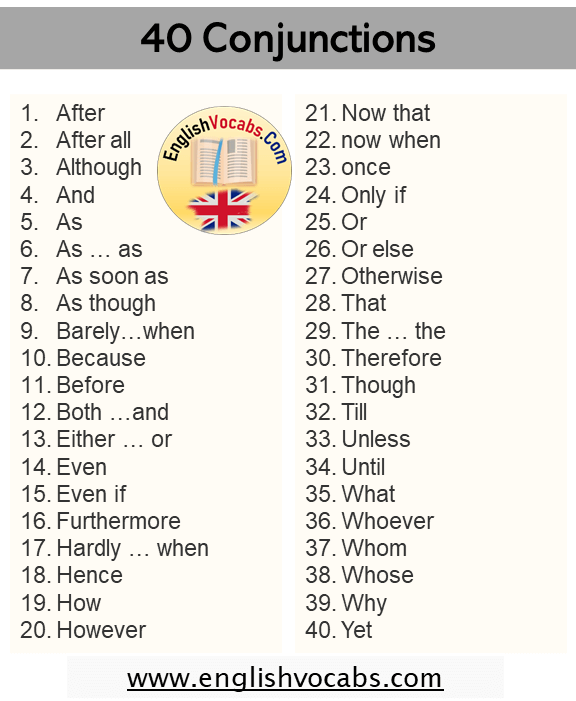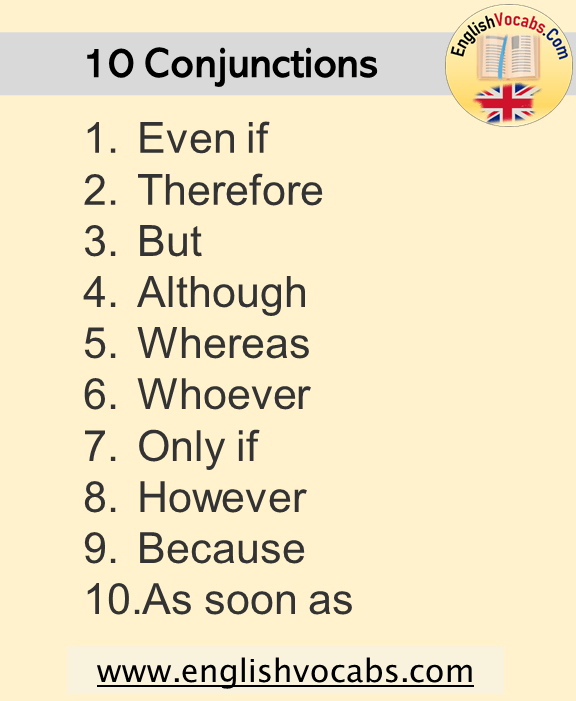Conjunctions Types, Definition and Examples Sentences

Table of Contents
Conjunctions
Conjunctions connect two clauses. It is important how conjunctions are used to construct meaningful, correct, and fluent sentences in spoken and written language. Conjunctions are in many categories in terms of meaning. It is preferred to prevent irregularities caused by complex and multiple short sentences with conjunctions. Sentences combined with conjunctions will have a more meaningful structure. If there is more than one subject, adjective, definite object, adverb, modifier, phrase, and predicate in a sentence, it is useful for connecting words and sentences. Conjunctions have no elements. Sometimes punctuation marks may be preferred instead of conjunctions.
Conjunctions are examined in many categories in terms of their meanings. Learning to use conjunctions properly is essential for everyday life.
Coordinating Conjunctions
Coordinating Conjunctions are the most commonly used conjunctions in everyday speech. It is frequently used by people in daily life while communicating. These connectors are:
- for, and, but, or, yet, so, nor
These coordinating conjunctions are used to connect sentences and also to combine sentences in positive and negative meanings.
Correlative Conjunctions
Correlative Conjunctions are a type of conjunction that combines different structures with phrases. In these types of conjunctions, meanings such as both and each appear. A positive-negative situation emerges between the connected sentences and the structures.
- Not…. only,
- But…. also
- Both…..and
- Either….or
- Neither….nor
- Whether….or
These examples are the most preferred ones for the conjunctions we mentioned.
Adverbial or Subordinating Conjunctions
The most commonly used adverbial conjunctions in English have an important place in speaking and writing. Adverbial conjunctions in excess are used to indicate place, time, reason, purpose, result, condition, and situation. Adverb connectors are also divided into many subgroups within themselves. The reason for this situation varies according to the purpose of use and the place where the adverbial connectors are used. If adverbial connectors are grouped, they are:
- Adverbs of time
- Location adverbs
- Adverbs stating condition/condition-result
- Adverbs expressing cause and effect
- Adverbial conjunctions expressing purpose
Starting a Sentence with a Conjunction
If the dependent clause precedes the independent clause, the sentence can be started with a clause. A sentence can also be started with a coordinating conjunction. Both are correct usage. It would be much more accurate to start a sentence with a coordinating conjunction. It is usually the best way to add emphasis to sentences. However, starting more than one sentence with conjunction may cause the sentence to lose its power. Therefore, this technique should be used correctly.
+90 Conjunctions Examples
After
After all
Although
And
As
As … as
As if
As long as
As much as
As soon as
As though
Barely…when
Because
Before
Both …and
But
By the time
Consequently
Cum
Either … or
Even
Even if
Even though
Ever since
Every time
Finally
For
Furthermore
Hardly … when
Hence
How
However
If
If … then
if only
if then
if when
In addition
in order that
Inasmuch
Incidentally
just as
lest
Likewise
Meanwhile
Nor
Now
Now since
Now that
now when
once
Only if
Or
Or else
Otherwise
Provided
Provided that
Rather … than
Scarcely … when
Since
So
So that
Still
Supposing
Than
That
The … the
Therefore
Though
Till
Unless
Until
What
Whatever
When
Whence
Whenever
Where
where if
Whereas
Wherever
Whether
Whether … or
Which
Whichever
While
Who
Whoever
Whom
Whose
Why
Yet


